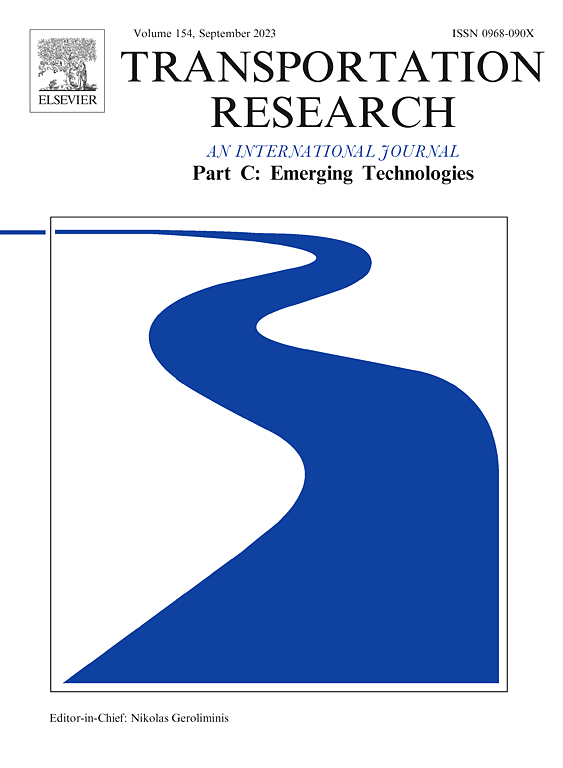Electric truck routing and platooning problem considering vehicle charging and driver assignment on highway networks
IF 7.6
1区 工程技术
Q1 TRANSPORTATION SCIENCE & TECHNOLOGY
Transportation Research Part C-Emerging Technologies
Pub Date : 2025-03-03
DOI:10.1016/j.trc.2025.105072
引用次数: 0
Abstract
Driven by the development of electricity-powered trucks and the connected and autonomous vehicle (CAV) technology, the electric truck (ET) routing and platooning has received considerable attention. To reap the labor cost savings and environmental benefits, this study makes the first attempt to investigate the ET routing and platooning problem considering vehicle charging and flexible assignment of the drivers. The objective is to determine the optimal routes and schedules of the trucks and the drivers that minimize the total operational cost to complete a group of freight transportation tasks while considering the features of the electric trucks, i.e., the limited driving range and charging demands due to limited battery capacity. A mixed-integer linear programming (MILP) model that can effectively determine the itineraries of the trucks and drivers and incorporate specific characteristics of ET platooning is formulated for the proposed problem. By exploring the essential features of the platooning process and its optimal solution structures, a tailor-designed edge set covering algorithm dedicated to platooning-related optimization problem is proposed to address the problem. Numerical experiments are conducted to evaluate the proposed model and solution method against three benchmark methods and quantify the benefits of the ET platooning. Sensitivity analysis is also carried out to explore the impacts of several major influential factors on the system performance and derive managerial insights.
求助全文
约1分钟内获得全文
求助全文
来源期刊
CiteScore
15.80
自引率
12.00%
发文量
332
审稿时长
64 days
期刊介绍:
Transportation Research: Part C (TR_C) is dedicated to showcasing high-quality, scholarly research that delves into the development, applications, and implications of transportation systems and emerging technologies. Our focus lies not solely on individual technologies, but rather on their broader implications for the planning, design, operation, control, maintenance, and rehabilitation of transportation systems, services, and components. In essence, the intellectual core of the journal revolves around the transportation aspect rather than the technology itself. We actively encourage the integration of quantitative methods from diverse fields such as operations research, control systems, complex networks, computer science, and artificial intelligence. Join us in exploring the intersection of transportation systems and emerging technologies to drive innovation and progress in the field.

 求助内容:
求助内容: 应助结果提醒方式:
应助结果提醒方式:


